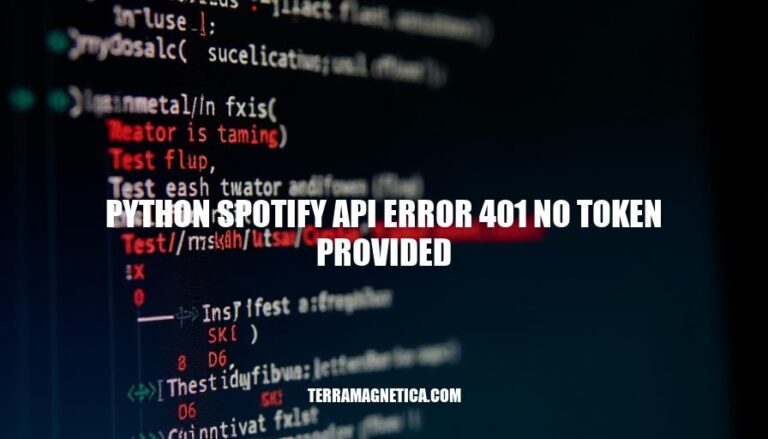


The error “401: No token provided” commonly occurs when using the Spotify API with Python. This error indicates that the request to the Spotify API lacks the necessary authorization token. It typically happens when the token is not included in the request headers, or the token has expired. To resolve this, ensure you obtain and correctly include a valid access token in your API requests.
A 401 error signifies “Unauthorized” access. This HTTP status code indicates that the request lacks valid authentication credentials for the target resource.
In the context of the Spotify API and the error message “no token provided”:
This error typically occurs when the token is not included in the request headers or if the token has expired or is invalid.
Here are typical scenarios that lead to the ‘Python Spotify API error 401: No token provided’:
Missing Authentication Token:
Expired Token:
Incorrect Token Usage:
Invalid Token:
Token Not Provided in Headers:
Scope Issues:
Here are the step-by-step instructions:
Check Token Validity:
Include Token in Requests:
requests library:headers = {
'Authorization': 'Bearer YOUR_ACCESS_TOKEN'
}
response = requests.get('https://api.spotify.com/v1/me', headers=headers)
Use Correct Authentication Flow:
spotipy library:import spotipy
from spotipy.oauth2 import SpotifyOAuth
sp = spotipy.Spotify(auth_manager=SpotifyOAuth(client_id='YOUR_CLIENT_ID',
client_secret='YOUR_CLIENT_SECRET',
redirect_uri='YOUR_REDIRECT_URI',
scope='YOUR_SCOPES'))
Debugging:
Check API Endpoint:
response = requests.get('https://api.spotify.com/v1/me', headers=headers)
Handle Errors:
if response.status_code == 401:
print("Error 401: Unauthorized. Check your token.")
These steps should help you diagnose and resolve the ‘401 No token provided’ error with the Spotify API.
Here are some best practices to avoid the ‘Python Spotify API error 401: No token provided’:
Securely Store Tokens:
Regularly Refresh Tokens:
spotipy which handle token refreshes for you.Check Token Validity:
Use OAuth2 Authentication:
Error Handling:
By following these practices, you can minimize the chances of encountering token-related errors.
occurs when the request to the Spotify API lacks the necessary authorization token, typically due to missing or expired tokens.
To resolve this, ensure you obtain and correctly include a valid access token in your API requests. Proper token management is crucial for successful API interactions, including: